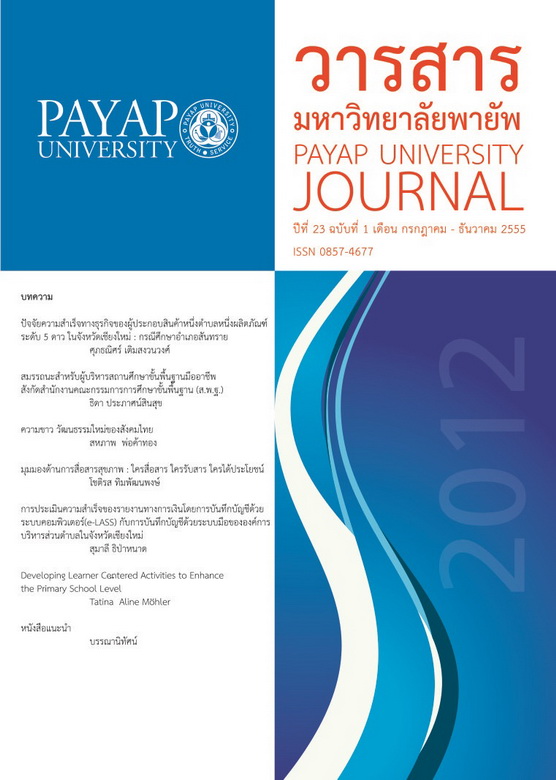มุมมองด้านการสื่อสารสุขภาพ : ใครสื่อสาร ใครรับสาร ใครได้ประโยชน์
Main Article Content
บทคัดย่อ
การสื่อสารสุขภาพ เป็นการสื่อสารที่ทำได้หลากหลายมิติ และหลากหลายระดับ ขึ้นอยู่กับว่า “ใครจะเป็นผู้สื่อสาร และ ใครจะเป็นผู้รับสาร” ซึ่งเราสามารถรับและส่งกันได้แบบทุกทิศทุกทาง เรียกได้ว่าทุกคนสามารถเป็นได้ทั้งผู้ส่งสาร และเป็นผู้รับสาร แต่สำหรับ ผู้ที่ทำหน้าที่ในการสื่อสารสุขภาพ หรือ“นักสื่อสารสุขภาพ” โดยตรง ควรต้องมีองค์ความรู้ มีข้อมูลที่ถูกต้อง และมีความเข้าใจในเนื้อหาที่จะถ่ายทอด และมั่นใจว่าสิ่งที่จะสื่อสารออกไป ได้ผ่านกระบวนการในเรื่องของการกลั่นกรองเนื้อหา อ้างอิงได้ มีความเชื่อถือ ถูกต้อง และ มีการวางแผนและกลยุทธ์ที่เหมาะสมกับกลุ่มเป้าหมายในแต่ละกลุ่ม จึงจะเป็นหลักประกันได้ว่า ผู้รับสารจะได้รับประโยชน์จากการสื่อสารสุขภาพได้อย่างแท้จริง สำหรับบุคลากรที่เป็นนักสื่อสารสุขภาพ จะต้องเป็นผู้ที่สามารถคิด วิเคราะห์และวางแผนกลยุทธ์ และยุทธวิธีในการสื่อสารด้านสุขภาพ ให้ออกมาได้อย่างน่าสนใจและเป็นรูปธรรม ให้ผู้รับสารเข้าใจได้ง่าย มีเนื้อหา ข้อความ ข่าวสารด้านสุขภาพ หรือองค์ความรู้ที่จะถ่ายทอดอย่างถูกต้อง ชัดเจน เหมาะสม โดยผ่านสื่อต่างๆ เพื่อให้เข้าถึงกลุ่มเป้าหมายที่ตรงกลุ่ม และบรรลุวัตถุประสงค์การสื่อสารที่กำหนดไว้
Article Details
เอกสารอ้างอิง
โชติรส ทิมพัฒนพงษ์. 2555. เอกสารการบรรยายเรื่องรูปแบบการสื่อสารในงานสุขภาพ. สาขาวิชาการส่งเสริมสุขภาพ คณะสหเวชศาสตร์ มหาวิทยาลัยศรีนครินทรวิโรฒ (วันที่ 2, 9 พฤศจิกายน 2555)
Clark, N. M., Cabana, M, D., Nan, B., Gong, Z. M., Slish, K. K., Birk, N. A., & Kaciroti, N. (2008). The clinician patient partnership paradigm: Outcome associated with physician communication behavior. Clinical Pediatrics, 47, 49-57.
Ong, L. M., de Haes, J. C., Hoos, A. M., & Lammes, F. B. (1995). Doctor-patient communication: A review of the literature. Social Science and Medicine, 40, 903-918.
Roter, D., & Hall, J. A. (2006). Doctors talking with patients/ Patients talking with doctors (2th ed.). Westport, CT: Greenwood Publishing Press.
Triandis, H. C. (1996). Attitude (psychology): Attitude change. New York: John Wiley & Sons.


